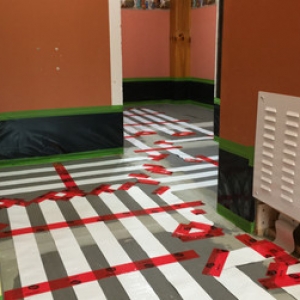Electric in-floor heating systems utilize electric cables or mats installed beneath the floor. These systems are easier to retrofit into existing homes since they do not require extensive installation of piping. The electric cables or mats generate heat when an electric current passes through them, warming the floor and subsequently the room.
Electric systems offer the advantage of quicker response times and zoning capabilities. They can be controlled room by room, allowing homeowners to customize the temperature in different areas according to their preferences. However, they might be slightly less energy-efficient than hydronic systems, as electricity generally costs more than water heating.
Advantages of Under Floor Heating Systems
- Uniform Comfort: The under floor heating heating eliminates the problem of cold spots often associated with conventional heating methods. The warmth radiates evenly from the floor, ensuring a comfortable and cozy environment throughout the room.
- Energy Efficiency: Hydronic systems are renowned for their energy efficiency due to the lower operating temperatures required to achieve the desired warmth. This can lead to reduced energy consumption and lower utility bills.
- Aesthetics and Space: With no need for radiators, vents, or baseboard heaters, in-floor heating systems offer a sleek and minimalist aesthetic. The radiant floor heating not only enhances the interior design but also frees up wall and floor space for furniture and decor.
- Quiet Operation: In-floor heating operates silently, without the noise associated with forced-air systems or radiators, contributing to a more peaceful living environment.
- Health and Hygiene: The floor heating mat can help reduce the circulation of allergens and dust particles that are often stirred up by forced-air systems. Additionally, the consistent warmth can contribute to better indoor air quality.

